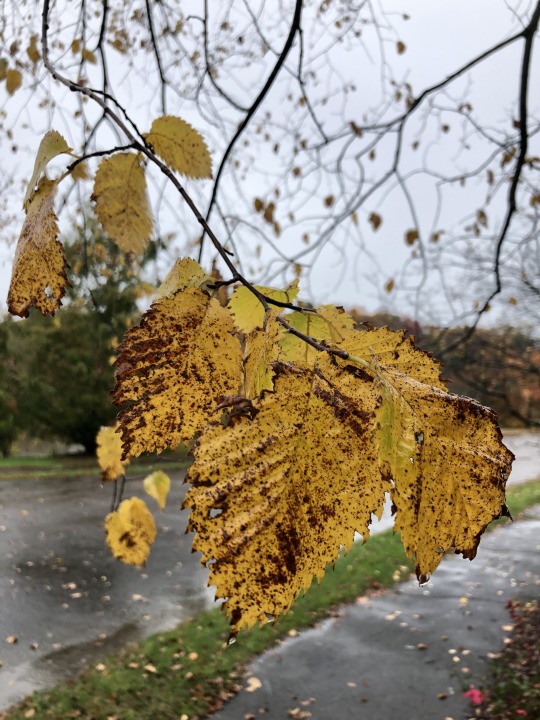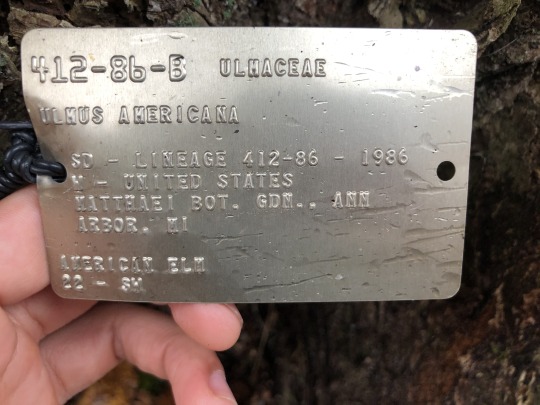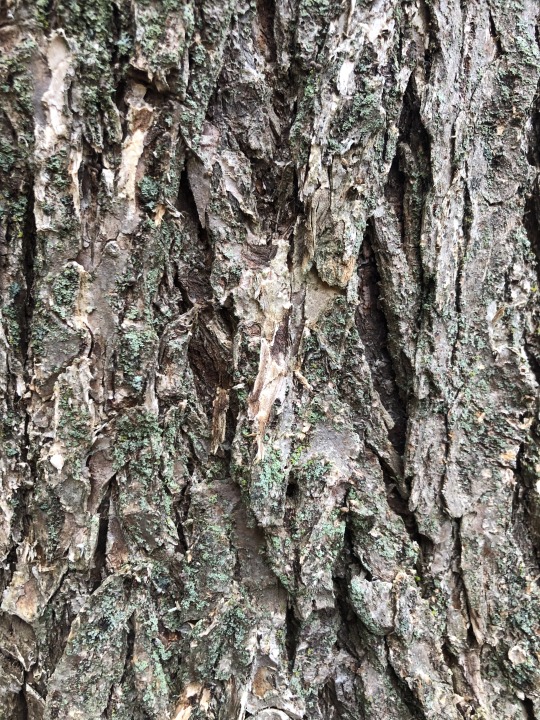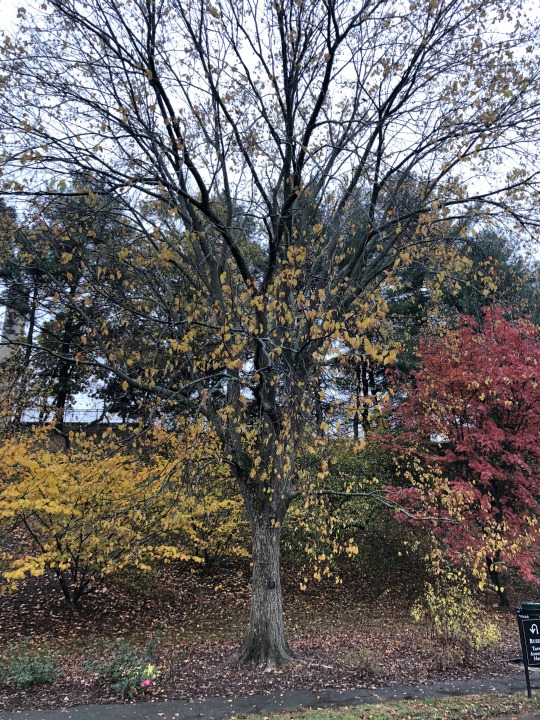#supercarbonsink
Explore tagged Tumblr posts
Photo




Ulmus americana (American Elm)
Plant community: Red Maple Swamp
Native status: Native to Eastern North America
Mature size (height & width):
Height: 60-80 ft
Width: 40-70 ft
Habitat/ Tolerances
Wet land habitat
Drought tolerant
Flood tolerant
Heat tolerant
Wind tolerant
Pollution tolerant
Tolerant to urban conditions
High Susceptibility to Disease (Dutch Elm Disease)
Eco-indicator:
Hardiness zone: 2-9
Leaf color: Dark green leaves in the summer which change to a yellow in the fall
Flower color / bloom time: Reddish-green blooms which come out between March and April
Response to Climate Change:
Despite susceptibility to Dutch Elm disease, climate change is predicted to make temperature conditions more suitable for Elms along the east coast.
Population and biomass expected to increase in suitable habitat with application of disease resistant species
Tolerance to heat and drought make the species adaptable to temperature rise
Potential Climate applications:
If we can develop reliable disease resistant species, American Elms could be a powerful climate change adaption tool.
With its variety of tolerances, resistance to drought, flooding, and urban pollution, The American Elm tree could serve as effective flooding buffers and carbon sinks, “Studies have shown, that a single large American elm, located on the southern side of a home, can intercept 2,384 gallons of storm water, conserve 107 kWh of energy, and sequester 518 pounds of CO2 annually”.
However, the largest obstacle is it’s susceptibility to Dutch Elm disease. Old growth Elms once dominated American floodplain forests and city scapes, but after the introduction of Dutch Elm Disease in the 1930s, Elm populations were devastated (millions lost). Now it is very rare to find Elms as large as they used to be. In order to save the species, researchers are monitoring natural populations, working to develop disease resistant species, and reintroducing these resistant strains to the wild. Many cultivars of the Elm have shown resistance to the disease and could be planted for their climate adaption benefits.
Carbon sink
Erosion control
Climate adaptability rank: 8
http://www.g-wow.org/App_Uploads_Docs/Submissions/2016%20Wisconsin-WesternUP%20Climate%20Change%20Projections%20for%20Individual%20Tree%20Species.pdf
https://blog.nature.org/science/2017/08/09/quest-restore-american-elms-nearing-finish-line/
http://www.missouribotanicalgarden.org/PlantFinder/PlantFinderDetails.aspx?kempercode=a922
https://www.mortonarb.org/trees-plants/tree-plant-descriptions/american-elm
#arnoldarboretum#redmapleswamp#droughtolerant#floodtolerant#heattolerant#windtolerant#pollutiontolerant#urbantolerant#diseasevulnerable#superclimateplant#supercarbonsink#erosioncontrol#americanelm
0 notes
Photo


Sphagnum spp. (Sphagnum Moss)
Plant community: Red Maple Swamp
Native status:
Mature size (height & width):
Height: 2-5 inches
Width: grows in mats of varying sizes
Habitat/ Tolerances
Wetland habitat
Flood tolerant
Wet conditions
Eco-indicator:
Hardiness zone:
Leaf color: green
Flower color / bloom time: non-flowering
Response to Climate Change:
Peat land bog habitat is under threat by increasing temperatures and drought.
Destruction and draining of peatland habitat, often for agricultural purposes can result in a variety negative climate effects.
10% of global carbon emissions due to peatland draining
Increases risk of flooding a drought
Reduced water quality
Potential Climate applications:
Sphagnum moss bogs are super carbon sinks (0.37 gigatonnes a year)
More carbon sequestration than all other vegetation in the world combined
Natural flood buffer
Biodiversity preservation
Water filtration
A highly absorbent plant which can hold up to 26 times it’s own dry weight. Moss can help retain water during drier conditions. Dead and decaying sphagnum moss or peat is often harvest and used as a soil supplement to help sandy dry soil types hold moisture. It could be used to help plants grow in drier areas impacted by drought.
Sphagnum peat bogs are very important in terms of dealing with the impacts of climate change. They provide a variety of ecosystem services through their role in sequestering carbon, preserving bio diversity, and purifying water. Sphagnum peat bogs also regulate water flows minimizing the risk of flooding, drought and seawater intrusion. Members of the Paris Agreement on climate change are encouraged to include peatland restoration in their climate plans.
Climate adaption rank: 6
https://www.iucn.org/resources/issues-briefs/peatlands-and-climate-change
https://www.stockholmresilience.org/research/research-news/2019-02-05-bogged-down.html
https://www.gardeningknowhow.com/garden-how-to/soil-fertilizers/sphagnum-moss-vs-sphagnum-peat-moss.htm
http://www.bio.brandeis.edu/fieldbio/Survival/Pages/sphagnummoss.html
#redmapleswamp#floodtolerant#supercarbonsink#floodcontrol#erosioncontrol#superclimateplant#native#sphagnummoss
0 notes
Photo




Castanea dentata (American Chestnut)
Plant community: Oak Hickory
Native status: Native to the Eastern United States
Mature size (height & width):
Height: 50 -75 ft
Width: 50-75 ft
Habitat/ Tolerances
Highly disease susceptible (Chestnut Blight)
Hardiness zone: 5-8
Leaf color: Dark green leaves in the summer which turn yellow and yellow brown in the fall
Flower color / bloom time: Has yellow-white blooms which come out in June
Response to Climate Change:
If we aren’t able to reintroduce disease resistant species, the American Chestnut will fall to the Chestnut blight much earlier than it will to climate change.
Potential climate applications:
Despite it’s susceptibility to disease, if we can develop disease resistant species, reintroducing the Chestnut could serve as a highly effective carbon sink. Research has shown the Chestnut tends to grow at extremely fast rates compared to other native tree species. Generally, the faster a tree grows the greater its rate of carbon sequestration. Researchers have developed a new hybrid Chestnut which is about 94% American Chestnut and 6% Chinese Chestnut giving the tree resistance to blight. The team of forestry researchers hopes to reintroduce this hybrid to native forests in an effort to save the tree from extinction and help prevent the climate crisis by decreasing the amount of carbon absorbed by the atmosphere.
Super Carbon Sink
Climate adaption rank: -1
Sources:
https://www.sciencedaily.com/releases/2009/06/090610154457.htm
http://www.missouribotanicalgarden.org/PlantFinder/PlantFinderDetails.aspx?kempercode=a387
https://www.mortonarb.org/trees-plants/tree-plant-descriptions/american-chestnut
0 notes
Photo







Taxodium distichum (Baldcypress)
Plant community: Forest wetlands
Native status: Native to the Midwest US
Mature size (height & width):
Mature height: 50 - 70 ft
Mature width: 30 - 30 ft
Habitat/Tolerances:
Common in the Southern US, especially wetlands and coastal areas. Some of the worlds oldest trees which date back thousands of years (Oldest 2624 years).
Adaptable to wet, dry, and swampy soil types
Flood tolerant
Drought tolerant
Heat tolerant
Salt Intolerant
Tolerant to urban environments
Shoreline stabilizer
Eco-indicator:
Hardiness zone: 4-11
Leaf color:
The Baldcypress has short needles which grow in pairs along the tree’s branchlets.
Spring: yellow and green
Fall: Reddish or orangish-brown
Flower color / bloom time: Inconspicuous flowers
Response to Climate Change:
Baldcypress trees are a highly resilient species which can adapt to wet and dry conditions, drought as well as withstand flooding. Many grow in constantly wet conditions along flood plains near rivers. In wet conditions the tree will develop “cypress knees” where it’s roots will stick up out of the ground. Serve as major carbon sinks. At the moment scientists are unsure how climate change will impact bald cypress populations, but fear a mass mortality of bald cypress old forest will result in a huge uptake of CO2 into the atmosphere. Studies have shown that warming and drying of the climate will likely result in the loss of southern populations of Baldcypress swamps. Populations that are most vulnerable are in Texas and south Florida.
Predicted population decline in southern regions
Potential Climate applications:
With such adaptable traits and tolerances, and native shoreline habitat the Baldcypress has a lot of application potential to adapt to climate impacts. One of its cultivars, the Shawnee Brave bald cypress is ideal for urban spaces and could be used for urban climate adaptation projects. A it is a very effective tree to reduce erosion, and a top carbon sink.
Climate indicator:
Growing for such long periods of time researchers have studied bald cypress tree rings in the Black River reserve to pinpoint major climate events of the past, including a two year drought in 1587 which was one of the worst in over 1000 years. Which may have correlated with the disappearance of the English Roanoke colony in North Carolina. Rings have also been shown to have withstood another 7 year drought prior.
Sources:
https://www.arborday.org/trees/treeguide/treedetail.cfm?itemID=787
https://www.mortonarb.org/trees-plants/tree-plant-descriptions/bald-cypress
https://www.ncbi.nlm.nih.gov/pmc/articles/PMC5502657/
https://www.smithsonianmag.com/science-nature/north-carolina-bald-cypresses-among-worlds-oldest-trees-180972134/
https://pubs.usgs.gov/of/2006/1269/pdf/of06-1269_508.pdf
https://www.tlake.com/blog/the-8-best-trees-for-erosion-control-in-middle-georgia
#arnold arboretum#bald cypress#cypress knees#climate resilient#needles#conifer#urbanuse#shorelinestabilizer#supercarbonsink#floodtolerant#droughttolerant#heattolerant#saltintolerant#populationdecline#climateindicator#superclimateplant
0 notes
Photo




Liriodendron tulipifera (Yellow Poplar)
Plant community: Oak Hickory Forest
Native status: Native to Eastern North America
Mature size (height & width):
Height: 60-90 ft
Width: 30-50 ft
Habitat/ Tolerances
Salt intolerant
Drought intolerant
Poor Drainage intolerant
Flood intolerant
Eco-indicator:
Hardiness zone: 4-9
Leaf color: Glossy green above with a pale green underside, changing to golden yellow in the fall
Flower color / bloom time: Yellow with orange band flowers which bloom in May and June
Response to Climate Change:
New habitat
Potential Climate applications:
As revealed by a New York City study on carbon sequestration, data shows the Yellow Poplar is a top carbon sink. It is already used in urban settings for aesthetic purposes.
Climate adaption rank: -2
http://www.g-wow.org/App_Uploads_Docs/Submissions/2016%20Wisconsin-WesternUP%20Climate%20Change%20Projections%20for%20Individual%20Tree%20Species.pdf
https://www.mortonarb.org/trees-plants/tree-plant-descriptions/tuliptree
https://www.missouribotanicalgarden.org/PlantFinder/PlantFinderDetails.aspx?kempercode=a878
https://www.americanarborists.net/tree-tips/2017/july/what-trees-are-best-suited-for-the-changing-clim/
#arnoldarboretum#saltintolerant#droughtintolerant#poordrainageintolerant#floodintolerant#supercarbonsink#newhabitat#climatevulnerable#native#yellowpoplar
0 notes
Photo





Platanus x acerifolia (London Plane)
Plant community: Urban growth
Native status: nonnative
Mature size (height & width):
Height: 70-100 ft
Width: 65-80 ft
Habitat/ Tolerances
Pollution tolerant
Tolerant of urban setting
Flood tolerant
Drought tolerant
Salt tolerant
Tolerant of poor drainage
Eco-indicator:
Hardiness zone: 4-8
Leaf color: Bright green leaves which turn a yellow brown
Flower color / bloom time:
Yellow (male) and red (female) blooms which come out in April
Response to Climate Change:
Potential Climate applications:
One of the most effective tree species in removing pollution in urban areas, effective carbon sink. Resistant to flooding, drought and is often used in urban settings. Could be an effective street tree to increase urban climate resilience.
Climate adaption rank: 8
Sources:
https://www.americanarborists.net/tree-tips/2017/july/what-trees-are-best-suited-for-the-changing-clim/
https://www.missouribotanicalgarden.org/PlantFinder/PlantFinderDetails.aspx?kempercode=a892
https://www.mortonarb.org/trees-plants/tree-plant-descriptions/london-planetree
#arnoldarboretum#nonnative#pollutiontolerant#urbantolerant#floodtolerant#droughttolerant#salttolerant#poordrainagetolerant#superclimateplant#supercarbonsink#londonplane
1 note
·
View note
Photo





Quercus rubra (Northern Red Oak)
Plant community: Old Field
Native status: Native to Eastern North America
Mature size (height & width):
Height: 50-75 ft
Width: 50-75 ft
Habitat/ Tolerances
Intolerant of salt
Tolerant of drought
Tolerant of poor drainage
Eco-indicator:
Hardiness zone: Zones 3-7
Leaf color: Dull dark green leaves in the summer which turn a bright red in the fall
Flower color / bloom time: Yellowish-green blooms which come out in May
Response to Climate Change:
Northward migration
Potential Climate applications:
Top tree to use for carbon sequestration
Harvard researchers are monitoring the physiology of a red oak with a variety of cameras and sensors. Monitored factors include trunk radius, carbon storage and sequestration, sap and water flow through xylem, surrounding temperature etc. The researchers are trying to figure out how heatwaves drought and other climate change induced events effect the trees systems. The tree has already been monitored for over 50 years prior and is connected with a Twitter account to update followers on how the tree is “feeling” saying statements like, “Today is the 24th hottest day since 50 years”.
Climate adaption rank: 3
Sources
https://htirc.org/wp-content/themes/child_theme/assets/pdf/David%20Platteter.pdf
https://news.harvard.edu/gazette/story/2019/08/tree-in-harvard-forest-live-tweets-climate-change/
https://ksj.mit.edu/dispatches/2015/05/19/video-what-red-oak-can-tell-us-about-climate-chang-3
#arnoldarboretum#saltintolerant#droughttolerant#poordrainagetolerant#migrantnorth#supercarbonsink#climateready#climatechangeindicator#native#redoak
0 notes
Photo




Juglans nigra (Black Walnut)
Plant community: Black Walnut Forest
Native status: Native to Eastern United States
Mature size (height & width):
Height: 75 - 100 feet
Width: 75 - 100 feet
Habitat/ Tolerances
Occur in rich woods, valleys along streams and in open upland woods
Salt intolerant
Moderately tolerant to drought
Moderately tolerant to poor drainage
Tolerant to urban conditions
Can be to to surrounding plants
Eco-indicator:
Hardiness zone: Zones 4-9
Leaf color: Leaves are green in the summer and turn yellow in the fall
Flower color / bloom time:
Yellowish-green blooms which come out during May and June
Response to Climate Change:
Population and biomass expected to increase in suitable habitat
Northward migration
Potential Climate applications:
One of the best trees to use as a carbon sink
Climate adaption rank: 7
Sources:
https://www.sciencedaily.com/releases/2011/11/111129103312.htm
https://www.mortonarb.org/trees-plants/tree-plant-descriptions/black-walnut
https://www.missouribotanicalgarden.org/PlantFinder/PlantFinderDetails.aspx?kempercode=a875
http://www.g-wow.org/App_Uploads_Docs/Submissions/2016%20Wisconsin-WesternUP%20Climate%20Change%20Projections%20for%20Individual%20Tree%20Species.pdf
#arnoldarboretum#saltintolerant#droughttolerant#poordrainagetolerant#urbantolerant#populationincrease#migrantnorth#supercarbonsink#superclimateplant#blackwalnut
0 notes
Photo





Liquidambar styraciflua (American Sweetgum)
Plant community: Oak Hickory Forest
Native status: Native to the Eastern United States
Mature size (height & width):
Height: 60 - 80 ft
Width: 40 - 60 ft
Habitat/ Tolerances:
Occurs in moist low woods and along streams
Flood tolerant
Salt tolerant
Drought tolerant
Heat tolerant
Tolerant of poor drainage
Tolerant of a variety of soil types
Eco-indicator:
Hardiness zone: Zones 5 - 9
Leaf color: The dark to medium glossy green leaves change to a of yellow, red, purple tones in the fall
Flower color / bloom time:
Yellow - green blooms which come out between April and May
Response to Climate Change:
· New habitat formation
· Responding positively to warmer temperatures with faster growth
Potential Climate applications:
One of the best trees to plant as a carbon sink, and a strong erosion control candidate. Yearly growth rings of the Sweetgum were compared to historical climate records to determine how temperature impacts rate of tree growth. Temperature rise resulting greater tree growth.
Climate Adaption Rank: 9
Sources:
https://www.americanarborists.net/tree-tips/2017/july/what-trees-are-best-suited-for-the-changing-clim/
https://www.sciencedaily.com/releases/2018/04/180416185629.htm
https://eos.org/articles/how-do-trees-respond-to-climate-change-clues-from-an-arboretum
https://www.thoughtco.com/which-trees-offset-global-warming-1204209
https://www.tlake.com/blog/the-8-best-trees-for-erosion-control-in-middle-georgia
#arnold arboretum#floodtolerant#salttolerant#droughttolerant#heattolerant#poordrainagetolerant#newhabitat#shorelinestabilizer#erosioncontrol#supercarbonsink#native#superclimateplant#americansweetgum
0 notes
Photo






Pinus strobus (Eastern White Pine)
Plant community: Old Field
Native status: New England conifer
Mature size (height & width):
Mature height: 50 - 80 ft
Mature width: 20 - 40 ft
Habitat/Tolerances: Inhabit forest edge, in woodlands, and wetlands
Cold tolerant
Salt intolerant
Drought intolerant
Intolerant of strong winds
Moderately tolerant of poor drainage
Eco-indicator:
Hardiness zone: Zones 3 - 7
Leaf color: Evergreen tree, no fall color. Green leaves are needle like and grow in clusters of 5
Flower color / bloom time: Non flowering plant
Response to Climate Change:
Due to climate change White pine populations have also moved north for colder temperatures and higher elevation, but to the surprise of ecologists the species has also moved towards the west. The west is often drier, and characterized by more frequent forest fires which makes this migration trend very usual.
Northward migration
Expected to decline in population in current suitable habitat
Potential Climate applications:
Are one of the top trees to plant to sequester carbon.
Climate adaption score: 4
Source:
https://gobotany.nativeplanttrust.org/species/pinus/strobus/
http://easternwhitepine.org/the-eastern-white-pine-tree-will-likely-migrate-west-with-climate-change/
https://phys.org/news/2017-05-west-young-forests-shifting-climate.html
https://www.mortonarb.org/trees-plants/tree-plant-descriptions/eastern-white-pine
http://www.missouribotanicalgarden.org/PlantFinder/PlantFinderDetails.aspx?kempercode=e710
http://www.g-wow.org/App_Uploads_Docs/Submissions/2016%20Wisconsin-WesternUP%20Climate%20Change%20Projections%20for%20Individual%20Tree%20Species.pdf
#white pine#arnold arboretum#conifer#migrantnorthwest#coldtolerant#droughttolerant#poordrainagetolerant#populationdecline#supercarbonsink#climateready
0 notes